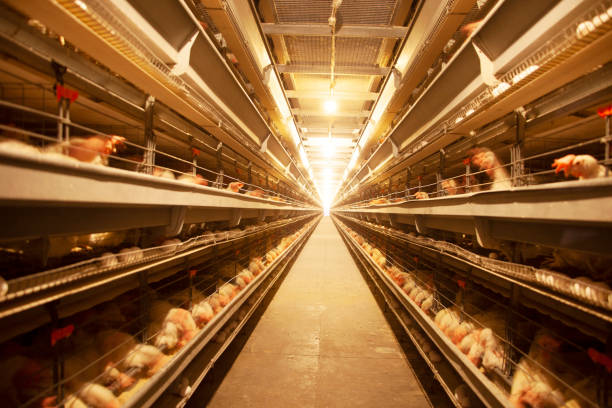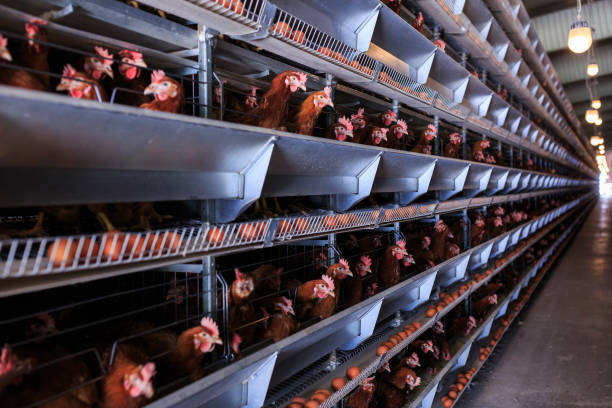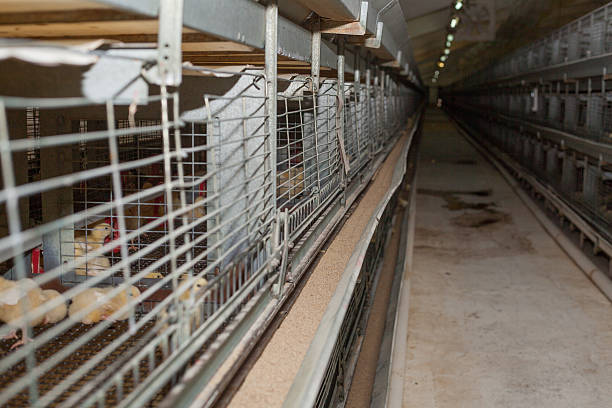
Investing in a 10,000 Layer Farm in Algeria: Return on Investment Analysis
Investing in a 10,000 Layer Farm in Algeria: Return on Investment Analysis
Algeria, with its growing population and increasing demand for poultry products, presents a promising market for egg production. Investing in a layer farm in Algeria can be a lucrative venture, but it requires careful planning and a thorough understanding of the costs and potential returns. This article provides a comprehensive return on investment (ROI) analysis for establishing a 10,000-layer farm in Algeria, covering key aspects such as initial investment, operating costs, revenue projections, and profitability analysis. We’ll break down everything you need to know to make an informed decision about whether this investment opportunity is right for you.
Understanding the Algerian Poultry Market
Before diving into the numbers, let’s quickly get a grasp of the Algerian market. Algeria’s population is steadily increasing, leading to a rise in demand for eggs, a staple food. Local egg production is growing, but there’s still room for new players, especially those employing modern and efficient farming methods. Government policies generally support agricultural development, which can be advantageous for investors in the poultry sector. Knowing this helps frame the ROI analysis.
Initial Investment Costs: Setting Up Your Layer Farm
The initial investment constitutes the largest expense when setting up a layer farm. It encompasses:
Land Acquisition: The cost will vary depending on the location (rural vs. peri-urban), size, and accessibility to infrastructure. For a 10,000-layer farm, you’ll need sufficient land to accommodate the poultry house, storage facilities, office space, and biosecurity zones. Let’s factor in USD 30,000 to USD 60,000.
Poultry House Construction: This includes building a durable and well-ventilated structure that protects the birds from the elements. Costs depend on the type of construction material (concrete, steel, etc.) and the level of automation. A standard poultry house can cost about USD 50,000 to USD 100,000.
Equipment Purchase (Cages, Feeders, Drinkers, etc.): This is where Livi Machinery comes in! We specialize in providing high-quality, durable, and efficient layer cages, automatic feeding systems, egg collection systems, and manure removal systems. Investing in these systems will increase efficiency, reduce labor costs, and improve overall egg production. Expect this to cost around USD 40,000 to USD 70,000. Automated systems, while initially more expensive, offer significant long-term savings and improvement in efficiency.
Purchase of Layer Chicks: Buying high-quality layer chicks from a reputable breeder is crucial. Aim for breeds known for their high egg-laying rates and disease resistance. A day-old chick can cost approximately USD 1.50 to USD 2.50. So, for 10,000 chicks, the cost will be USD 15,000 to USD 25,000.
Vaccination & Initial Medication: Protecting your chicks from diseases is paramount. Factor in the costs of an initial vaccination program and medications. Set aside USD 1,000 to USD 2,000 for this.
Water and Electrical Installation: Access to clean water and a reliable electricity supply are essential for your farm. Depending on the connection distance and infrastructure requirements, these costs can range from USD 5,000 to USD 10,000.
Generator (Backup Power): Power outages can disrupt egg production and negatively impact bird health. Having a generator as a backup power source is essential. budget USD 3,000 to USD 7,000.
Miscellaneous Expenses (Permits, Training, etc.): Don’t forget to factor in the costs of obtaining necessary permits, providing training to your staff, and other miscellaneous expenses. Consider budgeting USD 2,000 to USD 5,000.
Total Estimated Initial Investment: USD 146,000 to USD 282,000.

Operating Costs: Keeping the Farm Running
Operating costs are the ongoing expenses associated with running your layer farm. Accurately estimating these costs is critical for determining profitability.
Feed Costs: Feed is the single largest operating expense on a layer farm. The type and quality of feed influence egg production and bird health. A layer hen consumes approximately 110-120 grams of feed per day, which translates to roughly 40-44 kg per year. The cost of feed varies depending on the ingredients and supplier. Assuming an average feed cost of USD 0.40 per kg, the annual feed cost per bird is USD 16 to USD 17.60. For 10,000 layers, the total annual feed cost is USD 160,000 to USD 176,000.
Veterinary Expenses: Regular check-ups, vaccinations, and medications are required to maintain bird health and prevent disease outbreaks. Allocate around USD 3,000 to USD 5,000 per year for veterinary expenses.
Labor Costs: The number of workers required depends on the level of automation in your farm. Even with automated systems, you’ll need workers to manage the birds, collect eggs, maintain equipment, and handle manure. Factor in salaries, wages, and social security contributions. With some automation, let’s budget USD 10,000 to USD 15,000 per year.
Water and Electricity Bills: The consumption and cost of water and electricity will depend on your farm’s water usage and the running of your equipment. It is important to budget around USD 4,000 to USD 6,000 annually.
Packaging Materials: Costs for egg trays, cartons, and other packaging materials required for selling the eggs. Assume USD 2,000 to USD 4,000 annually.
Transportation Costs: Costs for transporting feed to the farm and eggs to the market. Consider USD 3,000 to USD 5,000 annually.
Miscellaneous Expenses: Repairs, maintenance, cleaning supplies, and other incidentals. Allocate USD 2,000 to USD 4,000.
Total Estimated Annual Operating Costs: USD 184,000 to USD 215,000.
Revenue Projections: Counting Your Eggs
Revenue generation depends on egg production, egg prices, and marketing strategies.
Egg Production Rate: A well-managed layer hen can produce approximately 300 to 320 eggs per year. This figure can be influenced by factors like breed, feed quality, lighting, and overall farm management. For our analysis, let’s assume an average production rate of 310 eggs per hen per year.
Saleable Eggs: Not all eggs produced will be saleable. Some will be cracked, damaged, or of poor quality. Assume a loss of about 5% due to breakage and unmarketable eggs. This leaves approximately 294 saleable eggs per hen per year.
Egg Prices: Egg prices fluctuate based on supply, demand, and seasonal factors. Research the current and historical egg prices in the Algerian market to get an accurate estimate. Consult local markets and wholesalers for price information. For the purpose of this analysis, let’s assume an average selling price of USD 0.08 per egg.
Revenue Calculation: With 10,000 hens producing 294 saleable eggs each per year, that’s 2,940,000 eggs. At USD 0.08 per egg, the total annual revenue will be USD 235,200.

Sale of Manure: Don’t forget the value of chicken manure! This can be sold as fertilizer to local farmers. This offers an additional income source. A 10,000-layer farm can produce a significant amount of manure annually. Assuming you can sell it for USD 2,000 to USD 4,000, this can give you a small earnings boost.
Total Estimated Annual Revenue: USD 237,200 to USD 239,200.
Profitability Analysis: Is It Worth It?
Now, the crucial part: figuring out if the investment is worth it.
Annual Net Profit: This is calculated by subtracting the total annual operating costs from the total annual revenue.
Using our figures: USD 237,200 (revenue) – USD 184,000 (operating costs) = USD 53,200 annual net profit (best case scenario)
USD 239,200 (revenue) – USD 215,000 (operating costs) = USD 24,200 annual net profit (worst case scenario)
Return on Investment (ROI): This is a percentage that reflects the profitability of your investment. It is calculated by dividing the annual net profit by the initial investment and multiplying by 100.
Best Case Scenario: Initial Investment: USD 146,000. Annual Net Profit: USD 53,200.
ROI = (USD 53,200 / USD 146,000) * 100 = 36.44%
Worst Case Scenario: Initial Investment: USD 282,000. Annual Net Profit: USD 24,200.
ROI = (USD 24,200 / USD 282,000) * 100 = 8.58%
Payback Period: This is the time it takes for your investment to be fully recovered. It is calculated by dividing the initial investment by the annual net profit.
Best Case Scenario: Initial Investment: USD 146,000. Annual Net Profit: USD 53,200.
Payback Period = USD 146,000 / USD 53,200 = 2.74 years
Worst Case Scenario: Initial Investment: USD 282,000. Annual Net Profit: USD 24,200.
Payback Period = USD 282,000 / USD 24,200 = 11.65 years
Sensitivity Analysis and Risk Factors
The above analysis is based on certain assumptions. Real-world scenarios might differ. A sensitivity analysis helps to assess how changes in key variables (e.g., feed prices, egg prices, production rates) affect the ROI.
Risk factors to consider:
Disease Outbreaks: A major disease outbreak can wipe out a significant portion of your flock, leading to substantial losses.
Fluctuations in Egg Prices: Egg prices are subject to market volatility.
Increases in Feed Costs: Feed prices can fluctuate due to changes in commodity prices and supply chain disruptions.
Political and Economic Instability: Political unrest and economic downturns can negatively impact the profitability of your farm.
Competition: The poultry market could become more competitive.
Mitigation Strategies

Investing in Biosecurity Measures: Implement a strict biosecurity program to prevent the introduction and spread of diseases.
Securing Feed Supply Contracts: Negotiate long-term contracts with feed suppliers to stabilize feed costs.
Diversifying Marketing Channels: Explore different marketing channels (e.g., direct sales, wholesalers, retailers) to reduce reliance on a single buyer.
Insurance Coverage: Obtain insurance coverage to protect against losses due to disease outbreaks, natural disasters, and other unforeseen events.
Continuous Monitoring and Improvement: Regularly monitor key performance indicators (KPIs) such as egg production, feed consumption, and mortality rates. Implement continuous improvement measures to optimize farm efficiency and profitability.
Conclusion: Is a 10,000-Layer Farm a Good Investment in Algeria?
Based on our ROI analysis, a 10,000-layer farm in Algeria has the potential to be a profitable venture. The “best case scenario” shows a potentially high ROI and a relatively quick payback period. However, the “worst case scenario” reveals that profitability is strongly dependent on external factors.
The actual return on investment will depend heavily on your ability to manage costs, maintain high egg production, and secure favorable market prices. Investing in quality equipment (like Livi Machinery’s cage systems) and implementing best management practices are vital for success.
Before making any investment decisions, conduct thorough market research, develop a detailed business plan, and seek expert advice from poultry specialists and financial advisors. This analysis provides a starting point, but further due diligence is essential for maximizing your chances of success in the Algerian poultry market. Remember, success in poultry farming isn’t just about buying some chickens and hoping for the best. It’s about meticulous planning, diligent execution, and continuous learning. Good luck!
